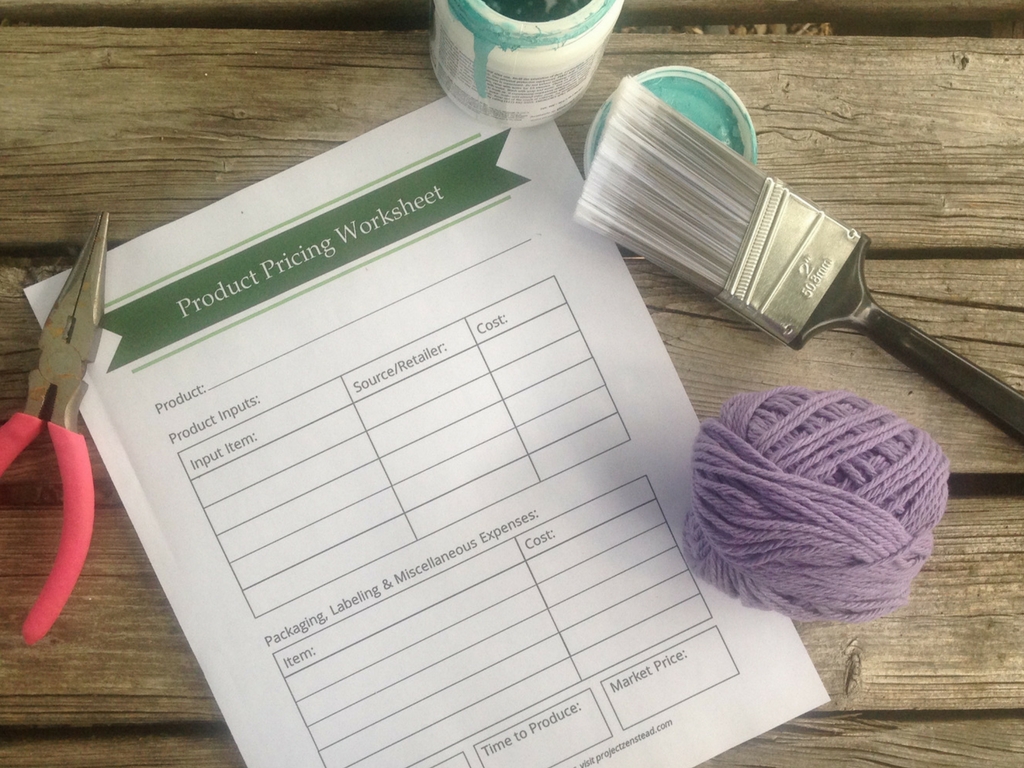How to Use a Product Pricing Worksheet
for Handmade & Value-Added Products

For many of us homestead entrepreneurs, creating handmade or value-added products is the easy part. The hard part comes after creation, when we have to price and market our goods for sale. Creating the product often comes as second nature (something we’ve been creating our whole lives), making it can be hard to think about our items in terms of the value we’ve put in and the profit we need to make from it. Using the Product Pricing Worksheet will help take the guesswork out of pricing your product.
The Product Pricing Worksheet can help you:
- Track and calculate the cost to produce your handmade or value-added product
- Calculate a market price for your product
- Be better equipped as you develop your pricing model
- Be able to justify your market price
- Track supplier and marketing expenses
- Keep a record of input expenses and market pricing over time
Click Here to Download the Printable Product Pricing Worksheet
How to Use the Product Pricing Worksheet:
1. Print one worksheet for each handmade or value-added product that you make.
2. Think about each input item that goes into the creation of your product. For instance, if you make homemade salves, your input items could include herbs, oils and beeswax. Write each item down on the worksheet.
3. Next, write down where you source each item. Items may be sourced from your own homestead or ordered in bulk from a company.
4. Write down how much it costs to source each input item. If you order your input items in bulk, break down the cost in order to find the cost per final product produced. For instance, if you order chamomile in bulk to make salves, calculate how many tins of salve you can produce from one bulk order of chamomile. Then calculate the cost of the chamomile per tin of salve.
5. Next, consider any additional costs that are associated with the production of your product. This should include the cost to package, label, ship, and market the product. If you sell your item online on a site like ETSY, include the listing fee and sales commission that you pay for each item. Mark all of these costs on the worksheet.
6. Now it’s time to calculate the final cost to create your product. Total all costs marked on your worksheet. Write the total in the “Cost to Produce” box.
7. Don’t forget to pay yourself for the hours of labor that you invested in creating the product – you will want to include this in your market price. Calculate the total time that it takes you to create your item. Mark this in the “Time to Produce” box.
8. Now, it’s time for you to arrive at your market price, which you will write in the “market price” box. There are many formulas available to help you arrive at a sales price based on the input cost and the time it takes you to produce your item. However, there are no hard and fast rules for pricing a handmade item and many factors can effect your market price, including competition, availability, and demand. Keep this in mind, as you calculate a market price for your item. You can always alter your prices as you learn and improve within your business.










